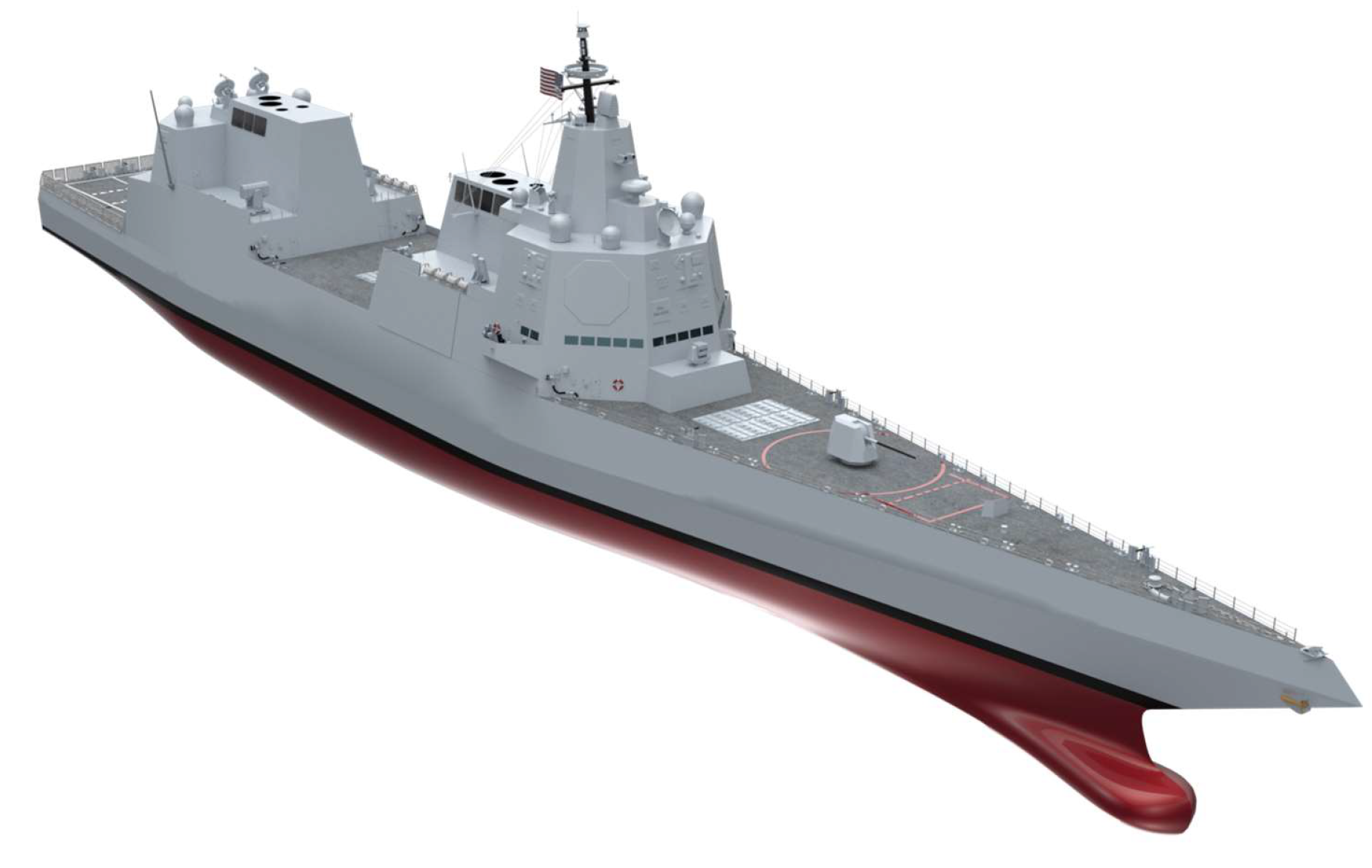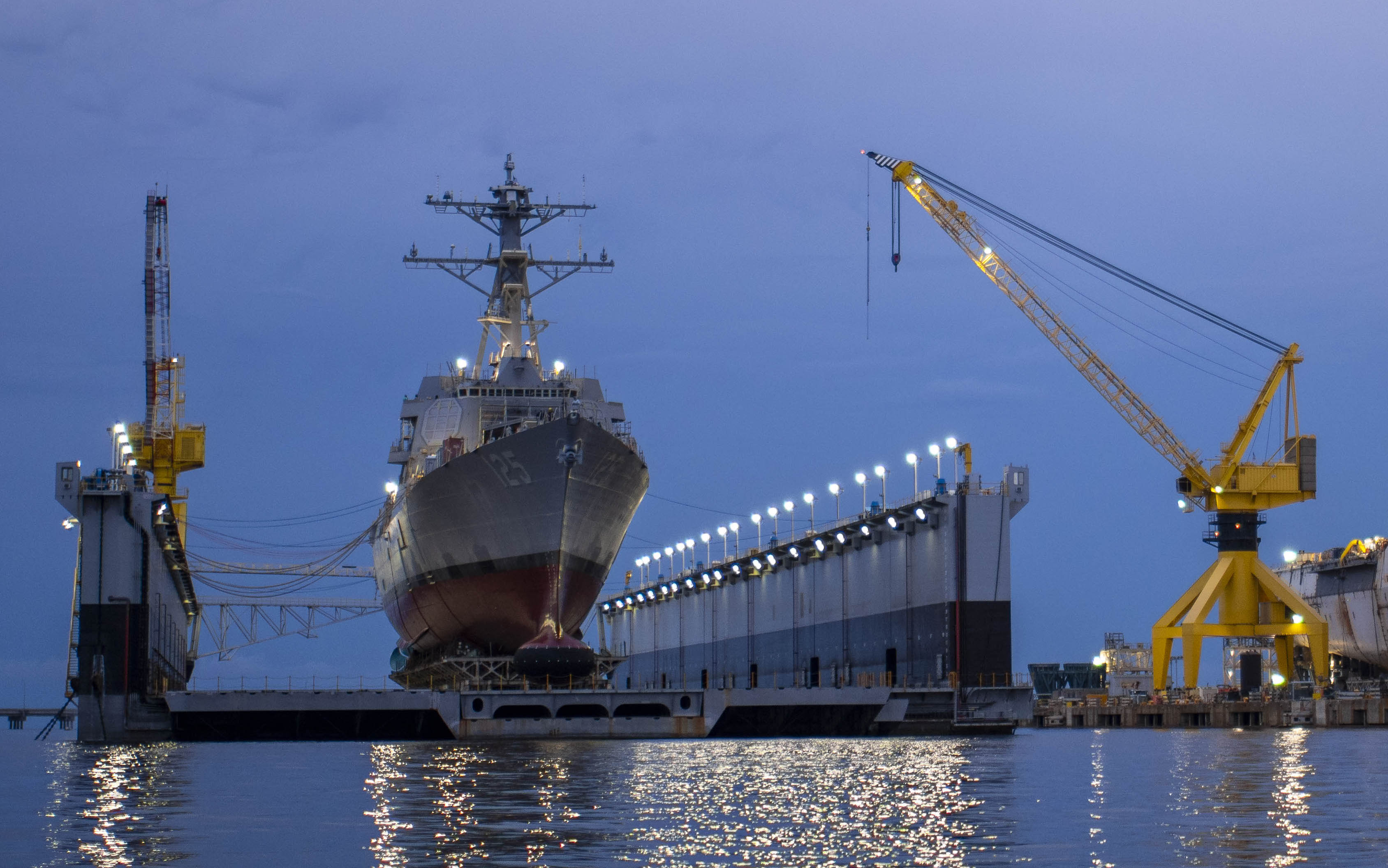
This post has been updated to include pending legislative action on Navy shipbuilding programs.
The design of the next American guided-missile destroyer will be led by the Navy in move that Chief of Naval Operations Adm. Mike Gilday says will reduce technical risk in the program.
The service brought in Ingalls Shipbuilding and General Dynamics Bath Iron Works to jointly develop DDG(X), the planned follow-on to the Arleigh Burke Flight III, but the Navy will firmly be driving the design, Gilday said speaking at the DefenseOne State of Defense conference on Wednesday.
“What we’ve done with DDG X is we brought in private shipbuilders, so that they can help inform the effort. It’s a team, but it’s Navy led. And so, both of the companies that produce DDGs are involved in that initial design. Our intent is to go into build with a mature design,” he said.
“I think it’s important that the Navy maintain the lead on design.”
The move for the Navy to take the lead in design is in response to the technical risk the sea service has endured in other ship classes. He cited success with the detailed design of the Columbia-class nuclear ballistic missile submarine being 80 percent complete before fabrication began on lead ship District of Columbia (SSBN-826).
“Technical risk has been a challenge for us, whether it’s Zumwalt, [Littoral Combat Ships] or [Gerald Ford-class carrier], in particular. [In] those three builds, we’ve accepted technical risks and it’s cost us in terms of keeping those ships, not only within budget, but also on schedule,” Gilday said.
As part of its pending Fiscal Year 2023 defense policy bill, the Senate pushed Ingalls and Bath to team on the DDG(X) in an effort to reduce risk.
“The committee notes that many recent Navy shipbuilding programs, including the DDG-1000 and Littoral Combat Ship programs, experienced significant cost increases, program delays, and reliability issues due to flaws in the earliest acquisition strategies,” reads the report language.
The Navy is set on having the next destroyer, planned to start fabrication in 2028, be a new hull wrapped around existing systems as a further risk reduction.
“An example might be the shift from the Ticonderoga cruiser to the Arleigh Burke destroyer, where we use where we essentially use the same combat system, the same weapon system but the hull is different,” Gilday said.
“Our intent for DDG(X) would be much the same, that we would use a proven combat system on that ship. But we need a ship that has more space and allows for more weight and for capability growth over time. An example might be hypersonic missiles, just based on the size of those missiles. We couldn’t fit those in a current Arleigh Burke, or even a Flight III. [DDG(X) is] a deeper ship, if you will, from that standpoint.”
The Navy is pushing for future surface ships to be armed with hypersonic missiles for offense and directed energy for defense — both require more power and more space than is possible with the current Burke hulls — even the 10,000-ton Flight IIIs, Gilday said.

It’s unclear how many of the new ships the Navy needs and how it would feather in with the existing Flight III ships underway at both Ingalls and HII.
Gilday said ongoing wargames that are testing out the Navy’s developing distributed maritime operations concept are pushing the service to field less large combatants like DDG(X) and more smaller ones like the Constellation-class guided-missile frigate (FFG-62) along with more nuclear attack submarines.
“The trends that we’re seeing — as we take a look at distributed maritime operations and as we take a look at a number of for structure assessments going back to 2016 — are more submarines, definitely more supply ships. In terms of the surface force, we’re seeing a rebalancing. The demand as we war game, as we exercise as we do more analysis is the trend for surface ships is all less larger surface combatants and more smaller surface combatants.
In the short term, Congress is pushing the Navy to buy more Flight IIIs with defense policy bills in the Senate and House for an up to 15-hull, five-year contract that would extend the class to a total of 104 ships.
At that rate, the shipyards would need to produce three hulls a year, a number Gilday said the industrial base couldn’t meet now.
“Right now, we’re not at a point where the industrial base can support three destroyers a year. They’re somewhere at two, two and a half,” he said.
“We want to make sure if we’re going to put that money down against shipbuilding, that the capacity is actually there. So that money is well spent… sending them a clear signal.”
Gilday pointed to an overall strain in the industrial base for shipbuilding as the limiting factor.
“It’s across the board,” he said.
“We’ve seen challenges with the industrial base, producing submarines on time, on schedule, and within budget. Same thing with aircraft carriers — destroyers are coming around but we still have some work to do. We’re seeing challenges… whether it’s shipbuilding, whether it’s aircraft production, the defense industrial base right now is strained. And a lot of that has to do with the workforce, as we recover from COVID.”





